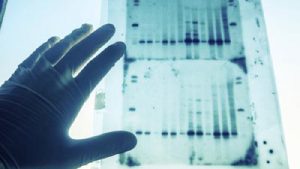 What is Karyotype Analysis?
What is Karyotype Analysis?
Karyotype analysis is a test used to examine chromosomes in a sample of cells. It serves to identify genetic problems that are the cause of a disorder or disease.
Karyotype is the characteristic of the chromosome set in an individual in terms of number and size. For example, when an individual is formed, it is the transfer of equal chromosomes from the mother and father. The arrangement of the chromosomes of a cell, individual or species, usually in mitosis metaphase, in terms of number and shape. The complete set of chromosomes of the nucleus of a cell, the arrangement of photographs of chromosomes taken under a microscope according to a standard classification.
This test:
Count the number of chromosomes.
Identify the structural changes in chromosomes.
Constructed:
This test can be done on almost any tissue, for example:
amniotic fluid
Blood
Bone marrow
Tissue from the organ that develops during birth (placenta) to nourish the growing baby
Amniocentesis is done to analyze the amniotic fluid.
Bone marrow sample requires a bone marrow biopsy.
The sample is placed in a special container and left to grow in the laboratory. Cells are then taken from the growing sample. The lab specialist uses a microscope to examine the size, shape, and number of chromosomes in the cell sample. The stained sample is photographed to provide a karyotype showing the arrangement of chromosomes.
Some disorders are identified by the number or arrangement of chromosomes. Chromosomes contain thousands of genes stored in the basic genetic material, DNA.
Reasons
This test is usually done to evaluate a history of a series of miscarriages, to examine a child or infant with developmental delays or unusual features that indicate a genetic abnormality.
A bone marrow or blood test can be done to identify the Philadelphia chromosome, which is found in about 85% of people with chronic myeloid leukemia (CML).
Amiotic fluid testing is done to check for chromosomal abnormalities in the developing fetus.
Karyotype analyzes are of great importance in sex chromosome disorders and sexual development defects. In other words, they are genetic tests that have an important place in the suspicion of sex development disorder.
If the chromosomes in the cell are aligned in a certain order after they are paired as identical pairs of chromosomes, that person’s karyotype is formed. The chromosome number, shape and size of each individual express its karyotype. The karyotype is transmitted from generation to generation. Chromosome maps of various species can be obtained by using the karyotype.
Chromosomes have short arms p and long arms q. Chromosomes are numbered from one to twenty-two according to their length and the location of the centromeres and divided into seven groups (A,B,C,D,E,F,G). The sex chromosomes are also indicated as X,Y.
The X chromosome is similar to chromosome number six. Y is twenty-one, twenty-two or greater.
Karyotype is obtained from blood cells or cells spilled from the mouth by special methods and stained with special dyes. With this, some chromosomal diseases are diagnosed.
Normal karyotype is 46, XY in men and 46, XX in women. Mongolism, also known as Down syndrome, has three chromosomes instead of two in the 21st chromosome pair. In these patients with 47 chromosomes, the body does not develop well and mental retardation is observed. Today, the terms trisomy 21 or trisomic 21 are used instead of the term mongolism. The karyotype of male patients is 47, XY+21 (See Mongolism). In Turner syndrome, only the X chromosome is found as the sex chromosome. It is defined as X0. Such women do not develop well. His karyotype is 45, X0. In Klinelfelter syndrome, the sex chromosomes are XXY. His karyotype is 47, XXY. These are immature, retarded males with 47 chromosomes. These diseases are congenital conditions that progress with disorders in various parts of the body. All three diseases are also accompanied by “Idiotness”. Sometimes different karyotypes are obtained from different cells in the same person, which is called “mosaism”.
Chromosome analysis
Five features are currently being studied in chromosome karyotyping.
Length, individual or total arm lengths,
Centromere position, telomeres and chromosome shape are determined accordingly.
Presence and location of the secondary node, if any,
Band properties of chromosomes are used in the determination of chromosomes in the same group with Giemsa and fleurosans dyes.
Autoradiographic features, inheritance of radiolabeled and nucleotides, and intra-DNA repetitions can be determined.
 What is Karyotype Analysis?
What is Karyotype Analysis?